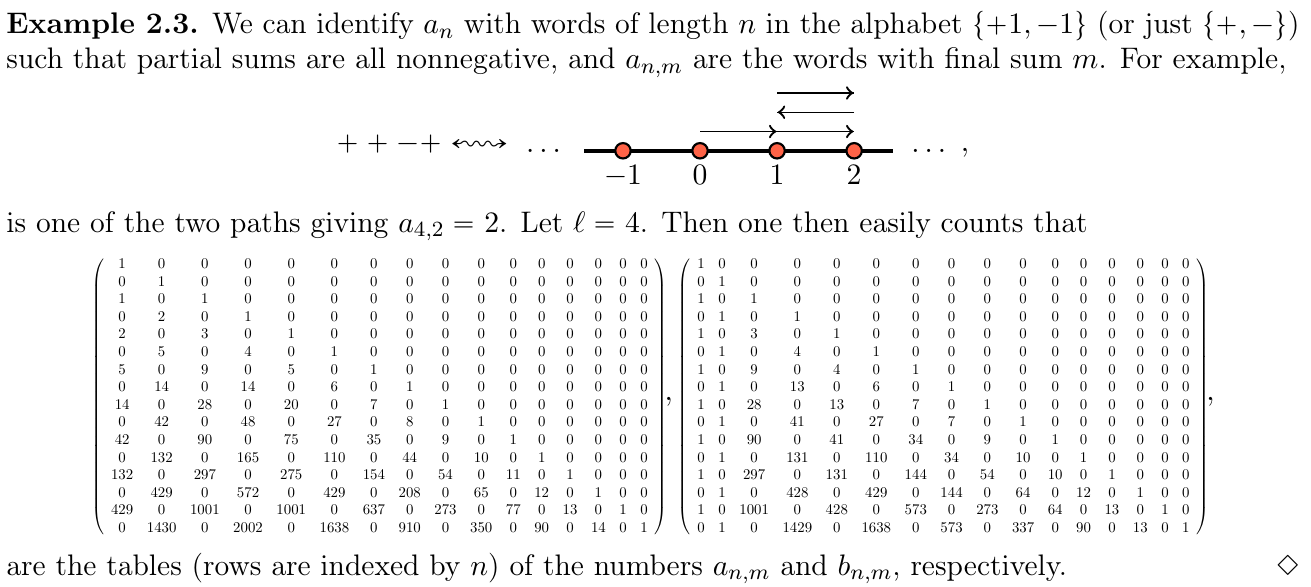Data
- Title: Growth problems of quantum groups
- Authors: Kevin Coulembier, Jensen O'Sullivan and Daniel Tubbenhauer
- Status: preprint. Last update: Tue, 29 Jul 2025 06:03:31 UTC
- Code and (possibly empty) Erratum: Click
- ArXiv link: http://arxiv.org/abs/2503.00685
Abstract
We study the asymptotic size of decompositions of tensor powers of tilting modules for quantum groups (mostly at a complex root of unity). In type A1 we obtain a sharp result for the number of indecomposable summands, explained by a one dimensional half-line random walk with a periodic congruence constraint. In general type we prove a universal law: the dominant part is governed only by the dimension of the module, while the correction depends only on the root system, so largely independent of the specific tilting module.
A few extra words
To set the stage, let
\[
b_n=b_n(T)=\#\{\text{indecomposable summands of }T^{\otimes n}\ \text{counted with multiplicity}\},
\]
for an object \(T\) in a monoidal category where this count makes sense (e.g. a finite dimensional representation of a group \(G\)).
Exact multiplicities are extremely sensitive to the precise setting and often completely out of reach, but \(b_n\) often has a stable, representation–theoretically natural asymptotic, and even a general form.
As an analogy: exact prime counts are subtle (at best), yet their growth is governed by the simple formula \(n/\ln n\); likewise, our focus is the coarse law for \(b_n\).
The contributions of this paper are as follows. Let \(U_q(\mathfrak{g})\) be a divided power quantum group at a complex root \(q\) of unity (e.g. \(q=\exp(\pi i/\ell)\)) and \(T\) a tilting \(U_q(\mathfrak{g})\)-module. Let \(b_n=b_n(T)\) and let \(a_n\) be the characteristic zero analog. We study the growth of \(b_n\) as \(n\to\infty\), and show that it is asymptotically of the form \(\Theta(a_n)\), where \(a_n\) is the characteristic zero analog of \(b_n\). For \(\mathfrak{g}=\mathfrak{sl}_2\) and its defining representation we prove a sharper result using random walks.
In the following picture \(a_n\) and \(b_n\) correspond to the sum over all \(m\):

